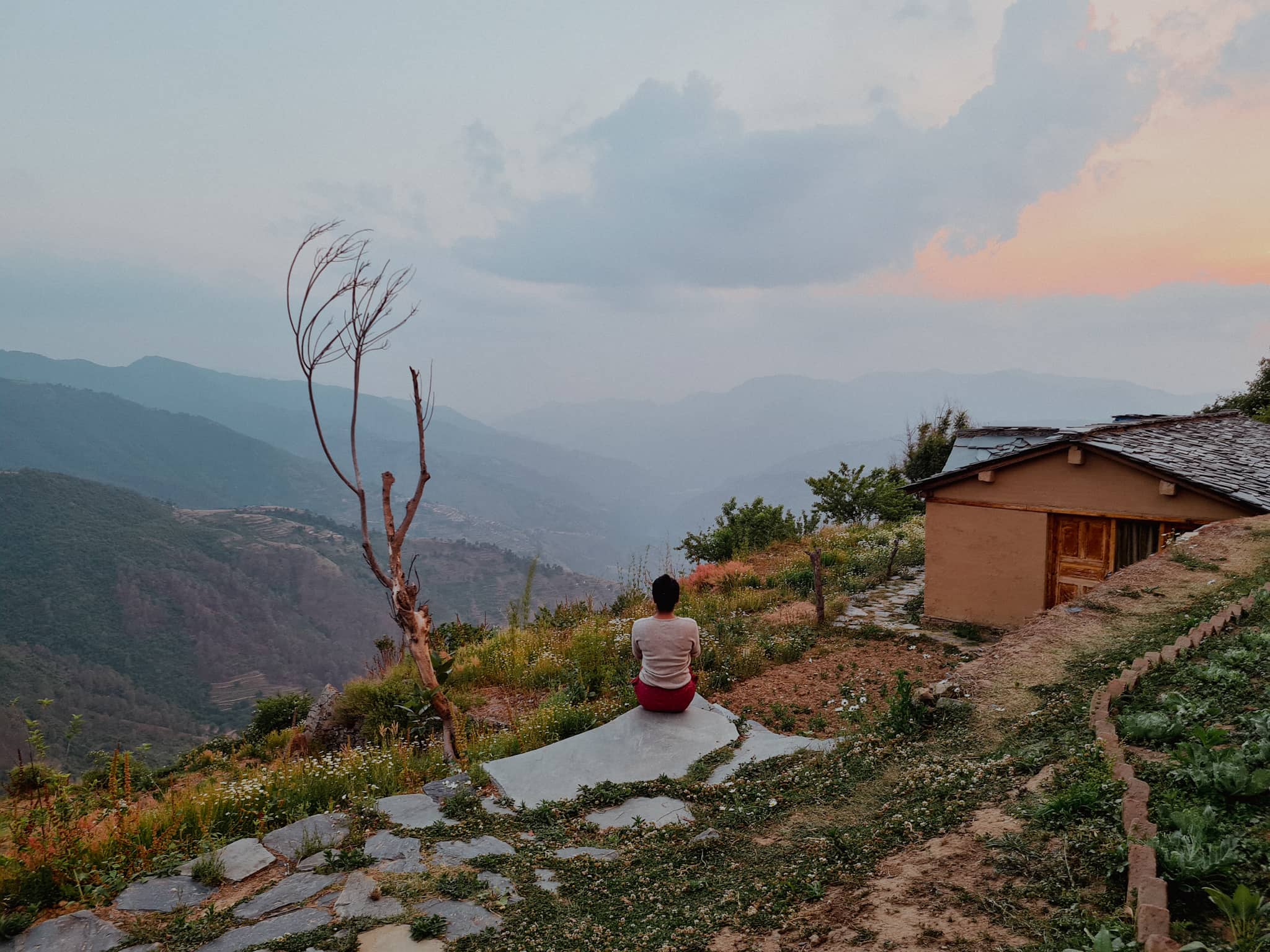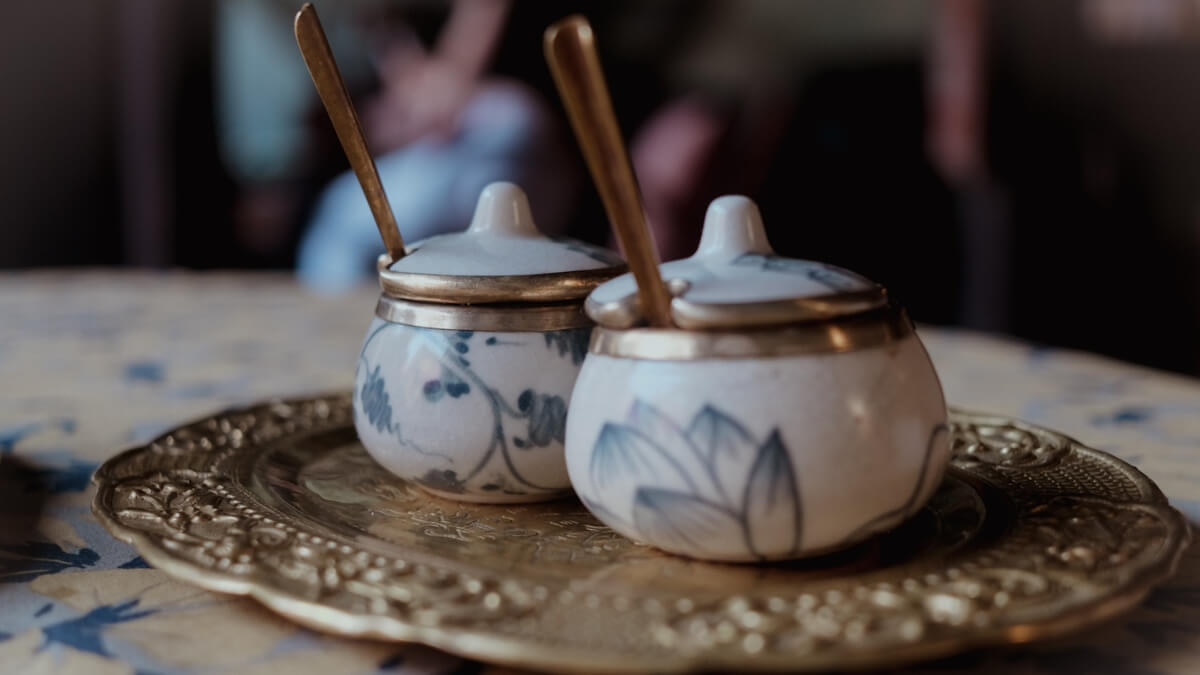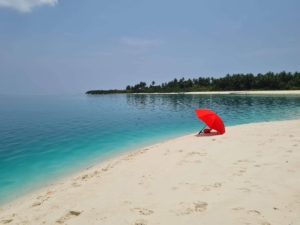‘Yeh SAB chamomile hai?‘ (is all this chamomile?).
The sound that left my voice box was surprisingly high-pitched, as I struggled to string together a coherent sentence while climbing up the slope. Perhaps it was the cracking of my voice, and not the question, that made Chandu ji turn around with a bemused expression which almost immediately turned into a boyish grin. We were walking along a trail in the Garhwal Himalayas. Chandu ji had paused to show us the difference between the common daisy and the flower that most urbanites, if not all, have in their kitchen cabinets in the form of a sleep-aid tea.
‘Haan ji, chamomile hai. Aapke liye baadme iska chai bana denge‘ (yes, it’s chamomile. Later I’ll make a tea out of it for you), he replied.
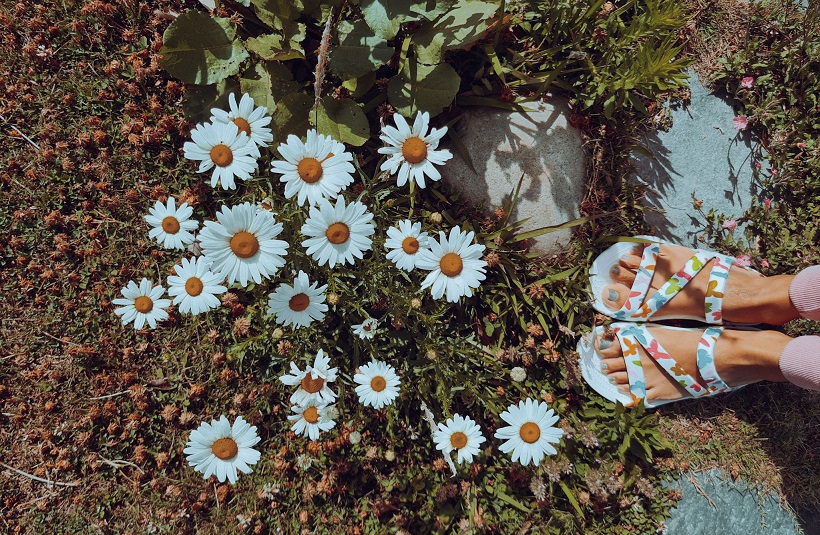
It wasn’t the presence of the flower that astounded me. It was the fact that chamomile—a floral tea that I pay nearly INR 500 for in the city—was growing abundantly around me, like weeds. The backdrop was just as astounding. Varying shades of green in the forests of the lower Himalayas stood starkly against a vivid blue summer sky – a comforting colour palette for eyes strained from staring at screens by day and incessantly scrolling through social media by night.
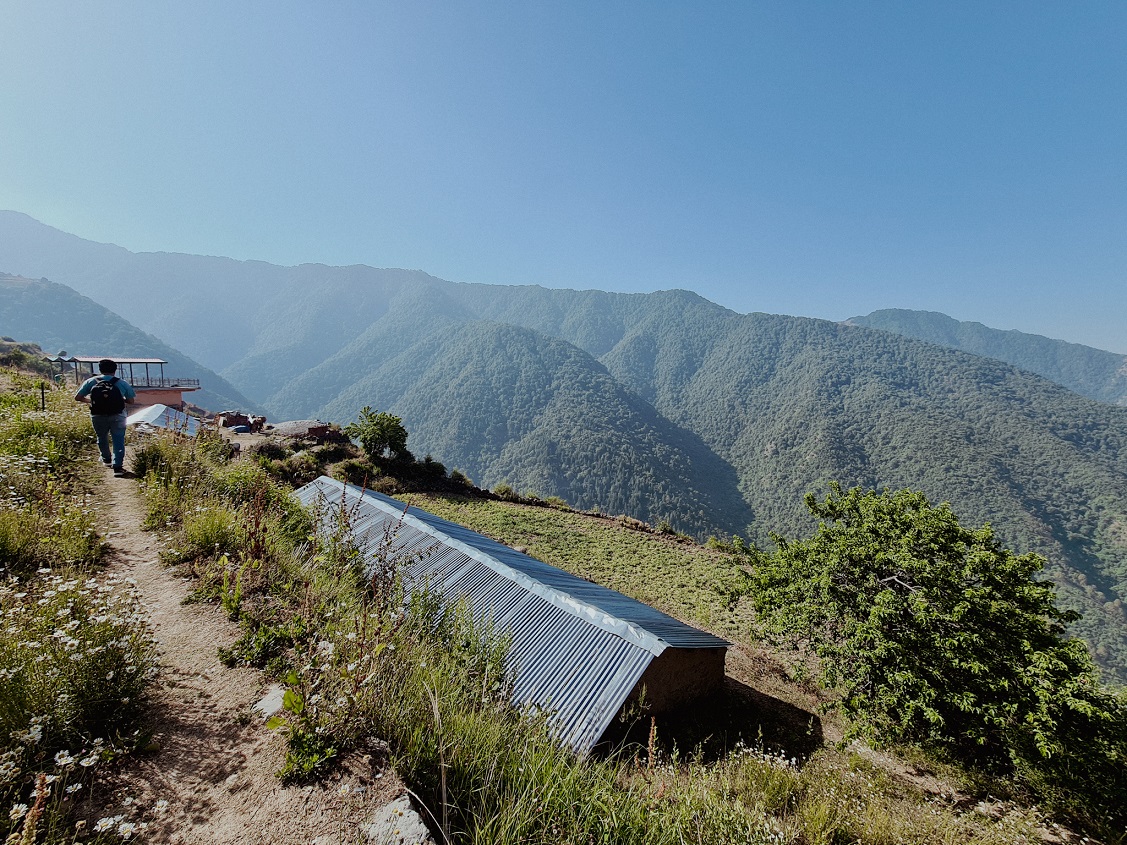
As the mid-day sun focused a searing hot ray on the back of my neck, I took a deep breath. I could smell the mountains—the hint of resin and sun-baked wood from the forests, the scent of earthiness emanating from the damp soil, and the faint sweetness of wildflowers blooming in the sun. No smoke, no acrid odour from fuel or rubber burning. The air was as clean as air can get. It felt lighter too, with an unbridled purity of sorts. I heard quails and other birds calling out. I heard mules shifting their weight on their feet. I heard the satisfactory crunch of dried leaves under my feet, and in some places, the squelch of freshly rained-on grass under our shoes as we continued to follow Chandu ji across the mountain and into a forest on our second day at The Goat Village in Uttarakhand’s Nag Tibba.
Throughout the 2-hour hike, Chandu ji, a resident of Garhwal region and our guide for the day, showed us apple, walnut, and plum trees, wild mint and wild peas, indigenous red shrubs used to make sour chutney, and a type of bamboo that’s used to make cane furniture. He picked luscious, red wild strawberries off the ground, each no bigger than my thumbnail, and handed them to us. ‘Khahiye‘ (eat), he said. Frankly, I hadn’t tasted regular strawberries as sweet and fresh!
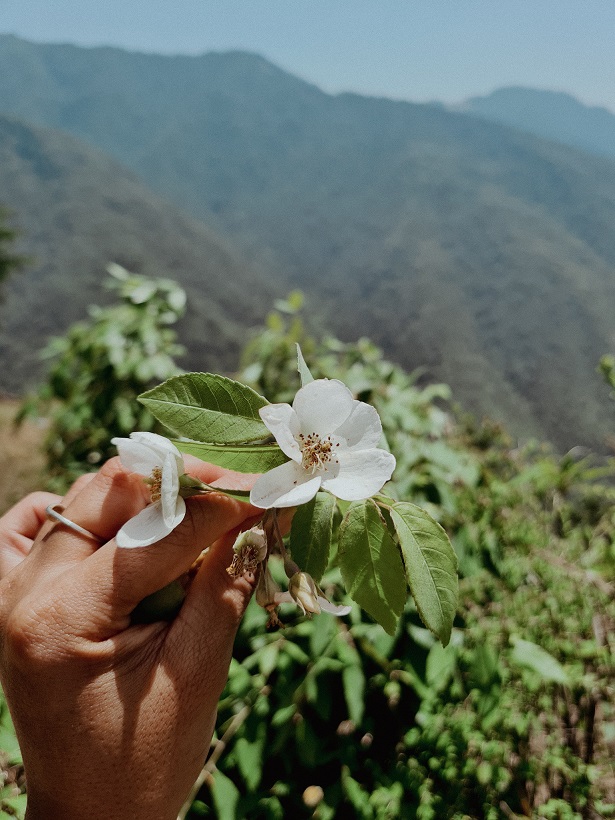
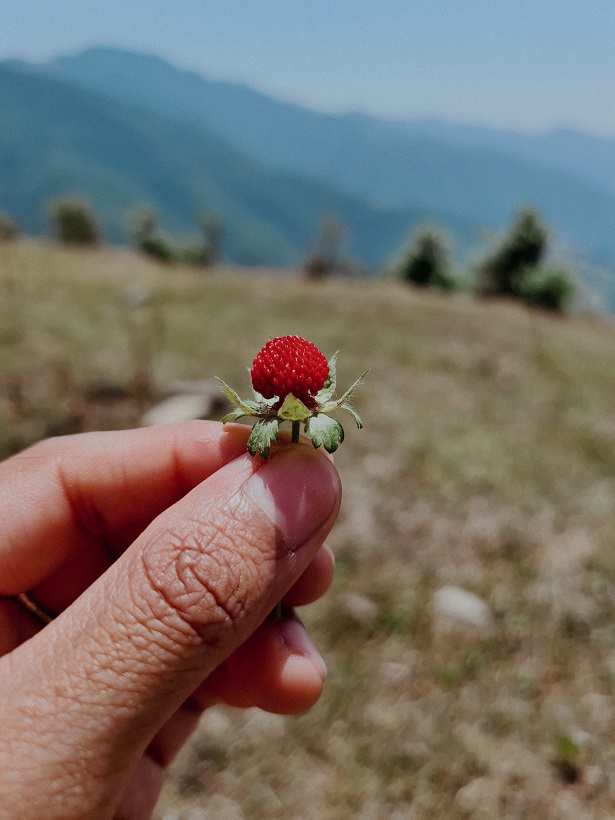
Phone on airplane mode, I used it only to click a few pictures. Many times, I came close to completely turning it off and tossing it in my bag, because I knew that any time spent on the screen, even to capture the beauty of the place, was time ill-spent. The moment was before my eyes – a vision of man and nature not just coexisting, but thriving together.
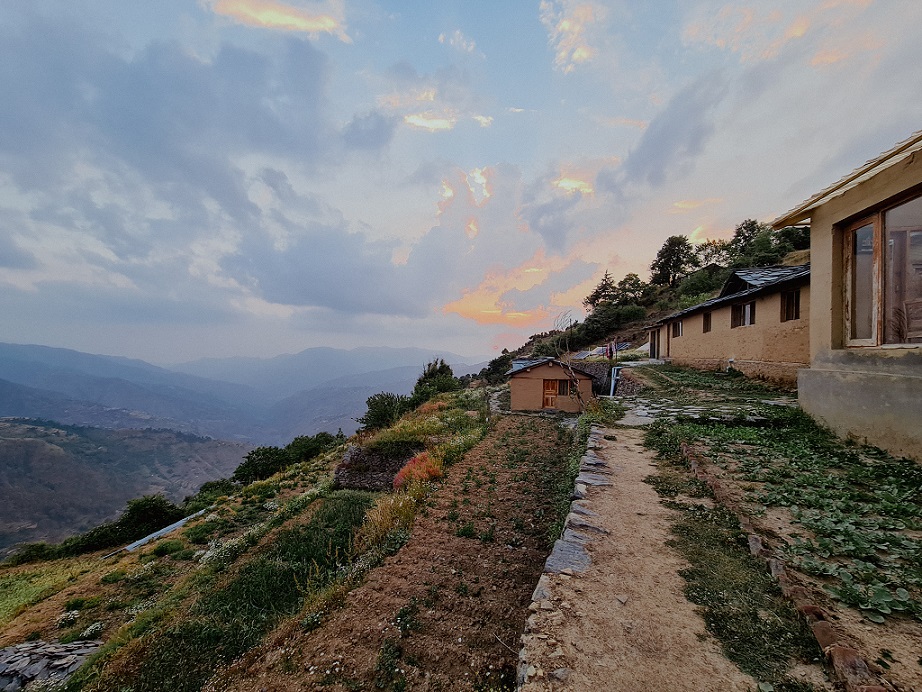
The Goat Village, Nag Tibba
The Goat Village is the perfect case for sustainable and slow travel. A homestay nestled in sleepy mountains, The Goat Village beckons soul-spent city folk to spend a few days in the pristine Garhwal Himalayas, indulging in the blissful act of doing nothing. There is no chase here. There are no must-see sites or must-do activities that if you don’t participate in, you’re left feeling inadequate compared to others, or even regretful.
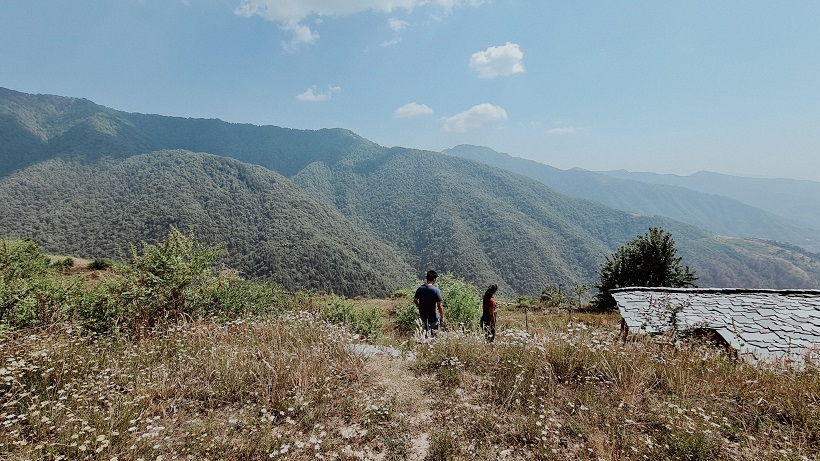
That’s not to say that there’s nothing to do here. Nag Tibba or Serpent’s Peak is a popular trekking destination, and The Goat Village is at an ideal halfway point for trekkers to rest and replenish. Likewise, those who spend a night here can take up the 4-kilometre trek the next day starting at 3 AM, to catch a spectacular sunrise at the peak at 6 AM.
Suggested read: My experience climbing Bali’s Mt. Batur with a guide named after the moon
I spent my days walking around the mountain’s forests, drinking more than the recommended amount of chai, feasting on Garhwali food, playing Scrabble with friends, and chatting with Chandu ji and Lucky ji, another staff member who guided us up the 2-kilometre climb on our first night to get to The Goat Village, all the while motivating us with lies like ‘Aap log bohut fast chad rahe ho, sirf ek ghante mein pohunch jaayenge!’ (You’re climbing quite fast, you will reach in just an hour!).
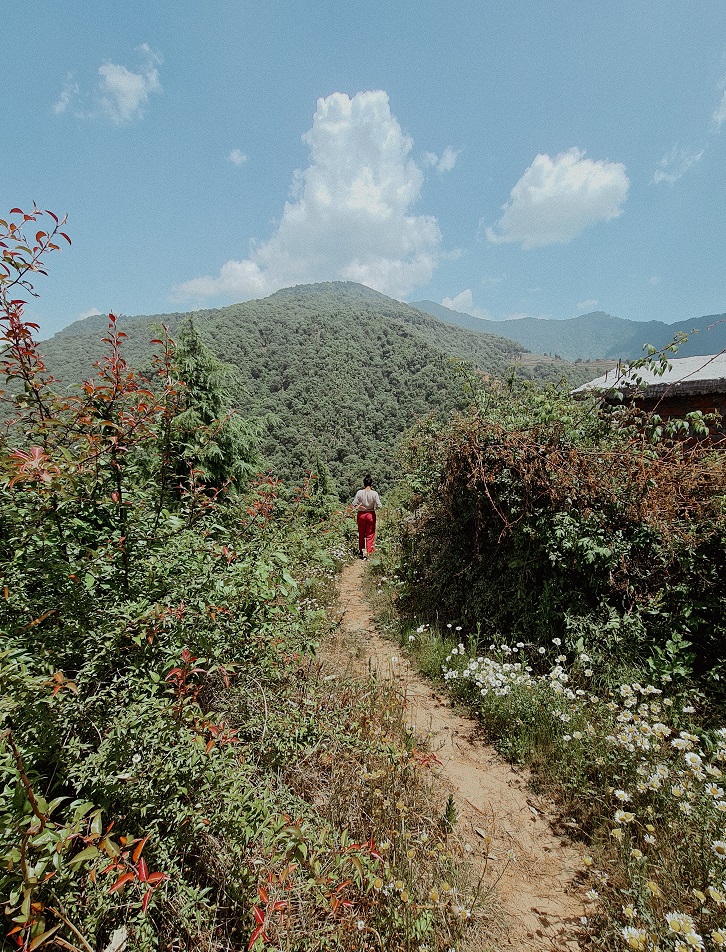

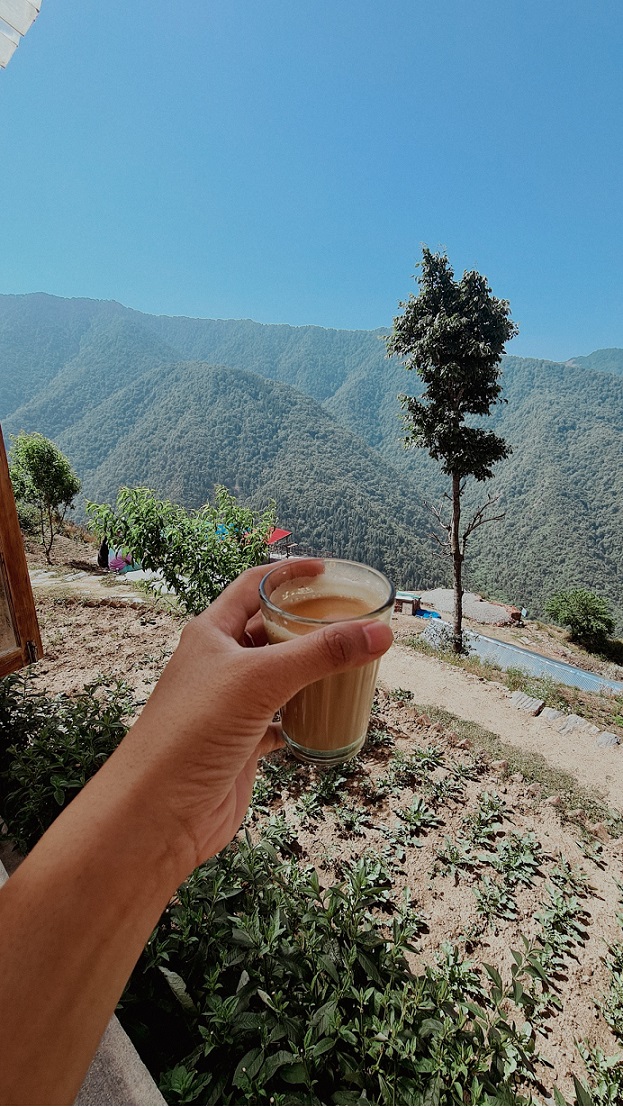
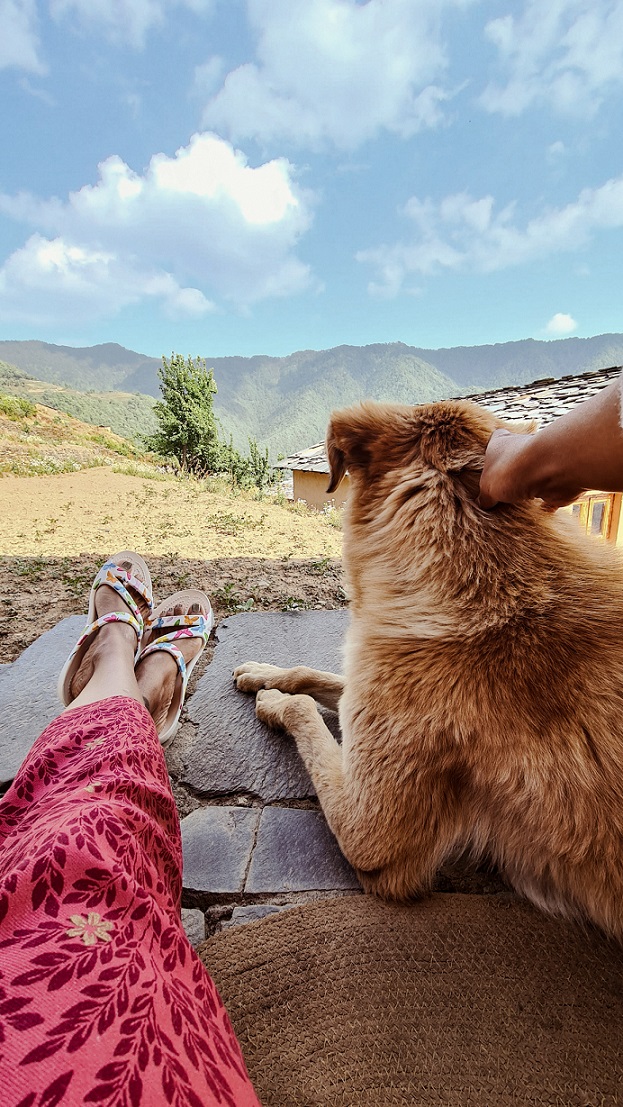
Social Media Detox meets Slow Travel
Imagine a few days of complete digital detox—no messages, no social media, no emails, no calls—thanks to a feeble network and your inner voice telling you to toss your phone away because, in front of you are massive, ancient mountains with valleys and folds like you’ve never seen before. You’re no longer in a hurry to get anywhere because there’s nowhere else you’d rather be. No cab to book, no traffic to complain about, no deadlines to meet, and no agendas to fulfill. At night, you sleep under a canopy of a thousand stars dotting a Bril-ink-blue sky so clear, that you can map more constellations than you thought you knew.
You’re not bound by the wretched FOMO that social media feeds off of. There is no chasing of Reels-worthy frames or Insta hot spots. You’re free from the pressure of dressing up and priming for anyone but yourself and the weather. The hunt for that perfect photo backdrop to rake in the likes and comments turns trivial because the mountains don’t put on a show for anyone. They simply exist, indifferent to our existence.
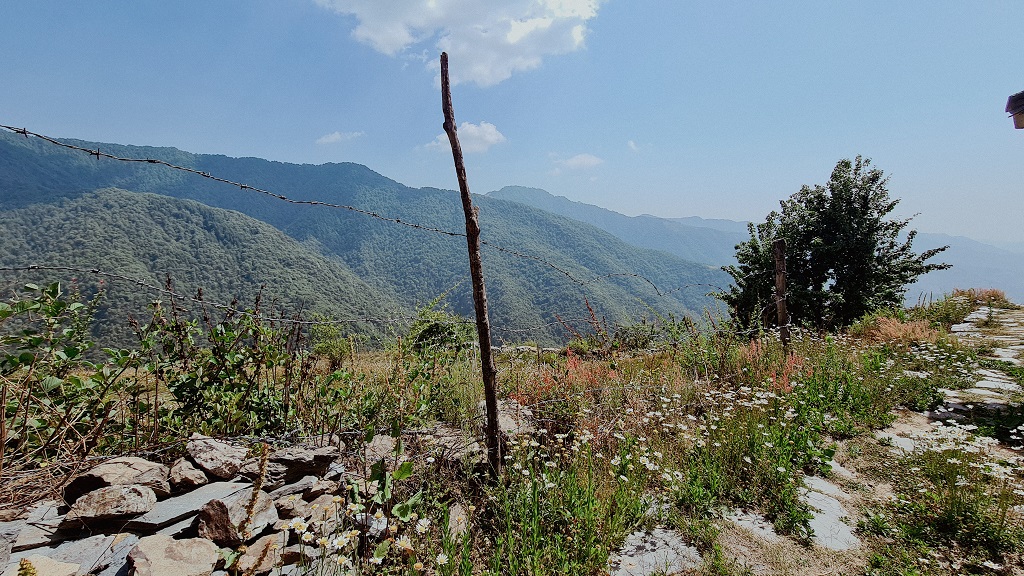
You learn about the mountains, where the water comes from and where it goes, and about the watering holes dug by locals so that deer, bears, and leopards can quench their thirst. You find out how the food is grown and cooked, which spices and flavours are native to the area, and which ones aren’t. You get to know those working at The Goat Village, beyond just their names—who they are, why they choose to stay when many from their villages and towns have left, and what their hopes and dreams are.
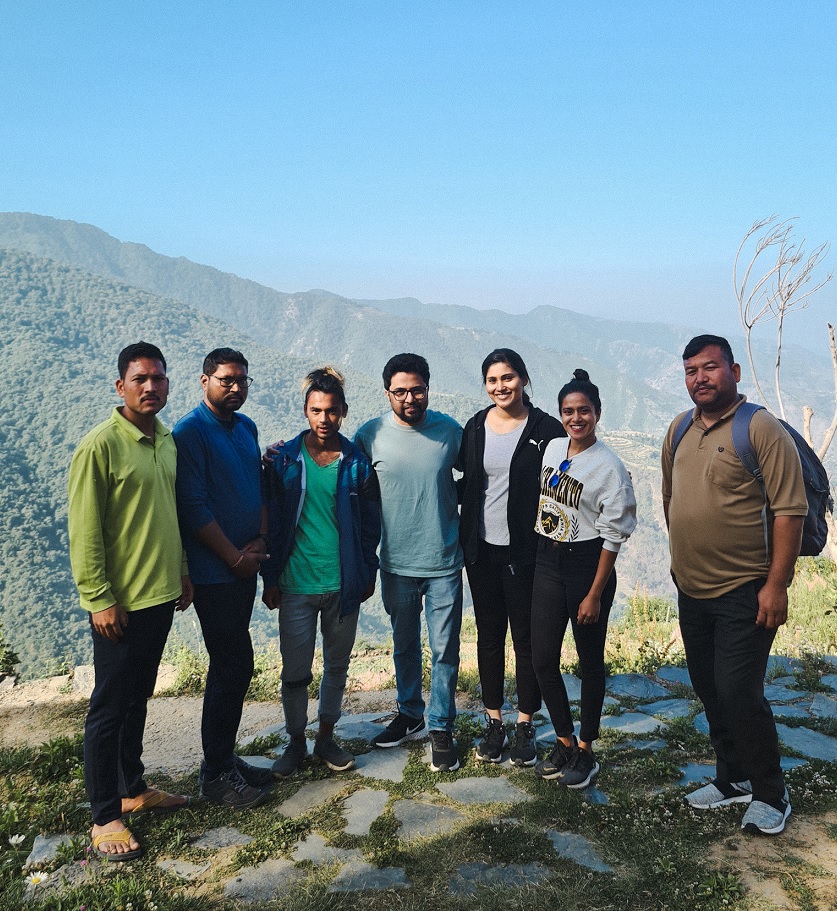
Very little of this, if any, happens when we rush to check off sights and destinations. As someone with a full-time job, I know how difficult it can be to participate in slow travel. But in those rare moments when slowing down is possible, it’s refreshing to hit the pause on being a tourist and press play on being a traveller who chooses to connect with a place and its people, instead of simply ticking off items from a list.
Back-to-Basics with a Taste of Rural Mountain Life
Do you remember taking bucket baths as a child? As a 90s kid, bucket baths were a bath-time adventure for me, particularly the last pour of water as I lifted the whole bucket above my head and let gravity do its thing. Even now, when I’m in my hometown of Chikmaglur, I skip the showerhead and go straight for the balti (bucket).
Balti baths are the way to go at The Goat Village in Nag Tibba. Hot water is delivered once a day to the cottage, in a nostalgia-inducing aluminium bucket. The race against time begins, as you drag the bucket to the bathroom and bathe before the water gets too cold.
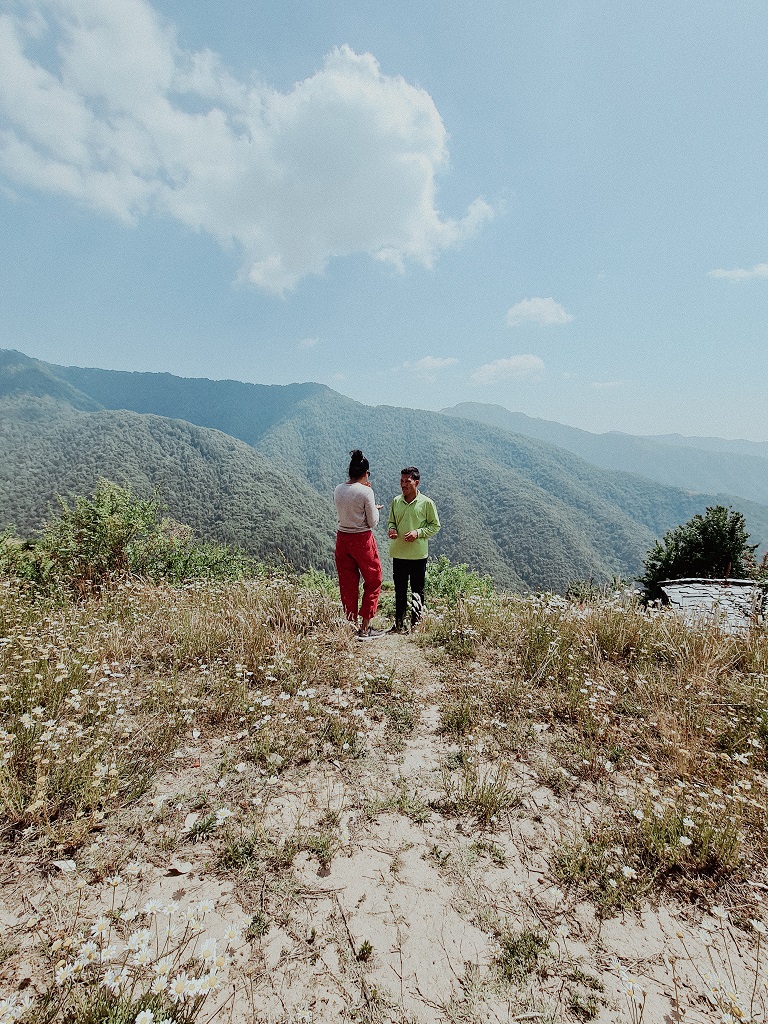

To get to The Goat Village, you need to climb up a 2-kilometre muddy and rocky pathway, and no cars or bikes will take you up there. It’s just you, your legs, and a mule that you can hire to help ease your burden, literally.
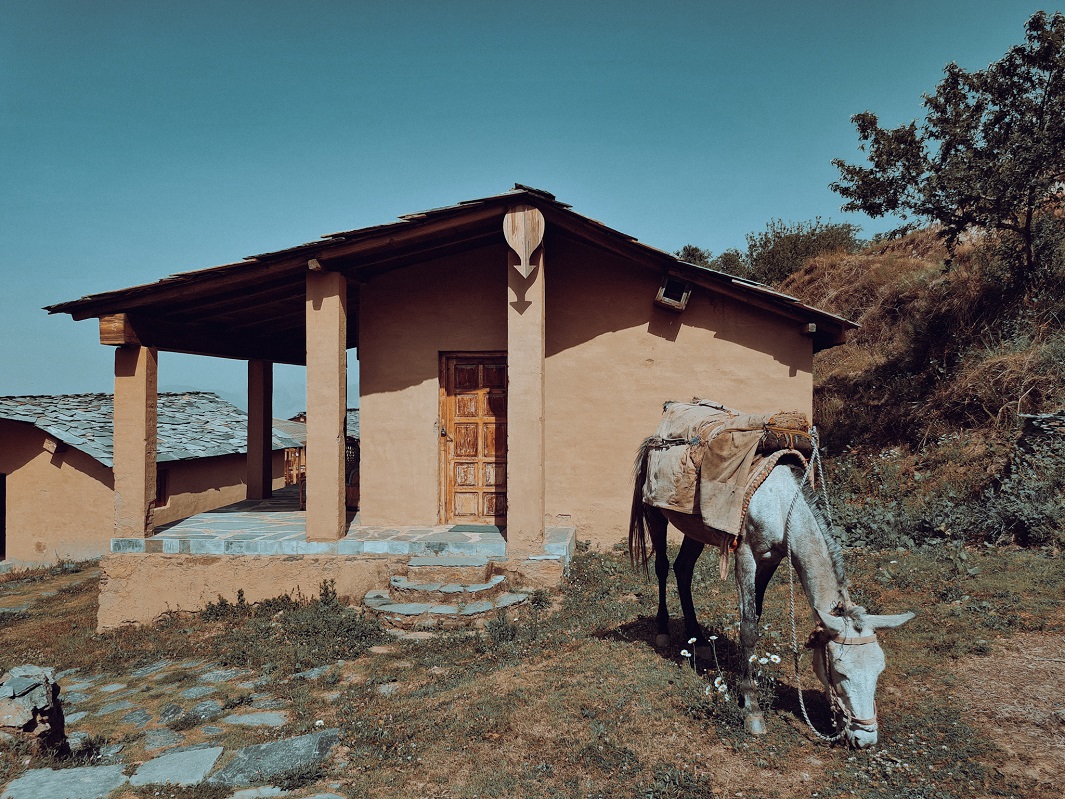
Bare-bones electricity, local cuisine made with recipes from village kitchens, and goats and cows lazily grazing all around you. It’s a tranquil escape from the trend-chasing content that’s algorithmically fed to us, and from the hustle culture that plagues us.

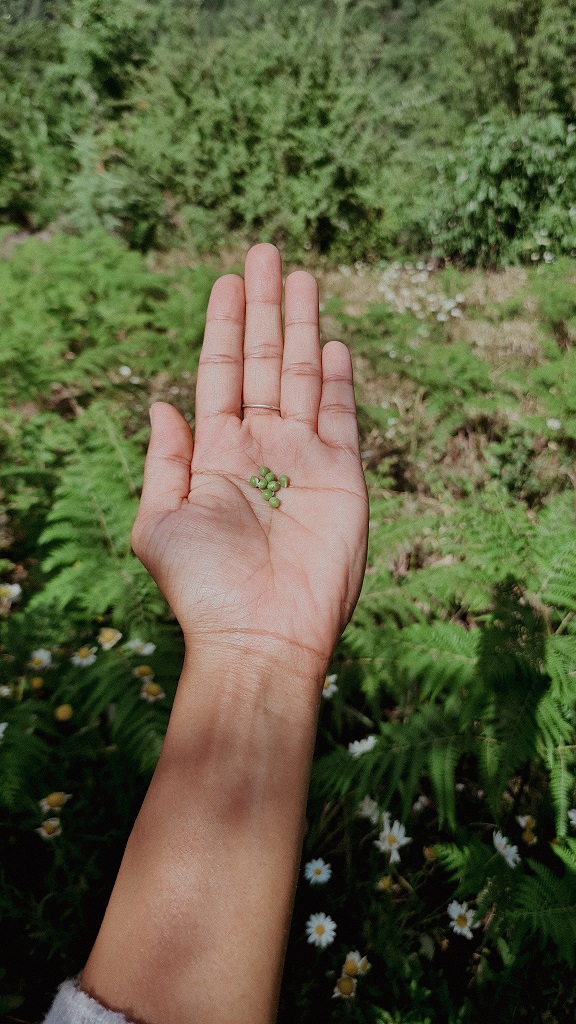
It’s true back-to-basics here, with a splash of rural living that, if you’re into it, will leave you wanting more.
Sustainability at its Core
The Goat Village accepts from Nature what is readily given, and doesn’t snatch from Her what isn’t ours. The cottages built using thousand-year-old earthquake-resistant Koti Banal techniques are made with mud, wood, and slate chips that fall from the mountains.
PANTWARI WEATHER
I travelled in the second week of May. Weather-wise, it was a mixed bag. Pleasant mornings grew into warm, sunny days that turned into breezy cloud-covered evenings and eventually, cool nights. Throughout, our cottage regulated its temperature on its own, keeping us cool during hot afternoons and warm during chilly nights. Sans fans and heaters.
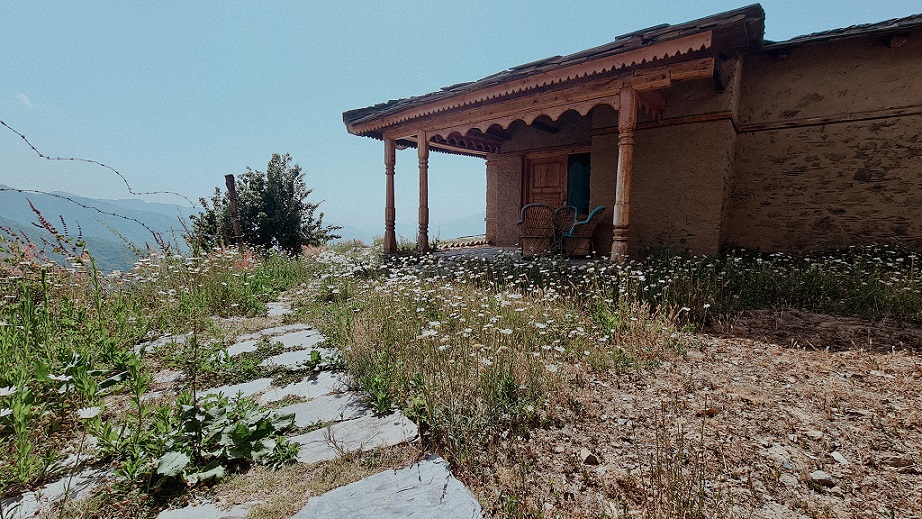
In what appears to be the middle of the farmland is a dining hall and polyhouse that I dubbed the chill-out zone. Dining tables, chairs, a sofa, coffee tables, and a bookcase surround the hall. Smack in the middle of it all is a veggie patch. Tomato plants flower in buttery yellows, while stalks of glistening green chillies and pea pods dance and wave lightly in the breeze. Outside our cottage is a hearty cabbage patch with luscious, plump leaves.

The food is made from ingredients that are either grown on farms and the greenhouse or are indigenous to the area. Paneer made with milk provided by the cows on the farm, rotis made from mandua, piping hot rajma chawal, juicy peas, and comforting, thick dal – everything is as fresh and as farm-to-table as it can get. And delicious.
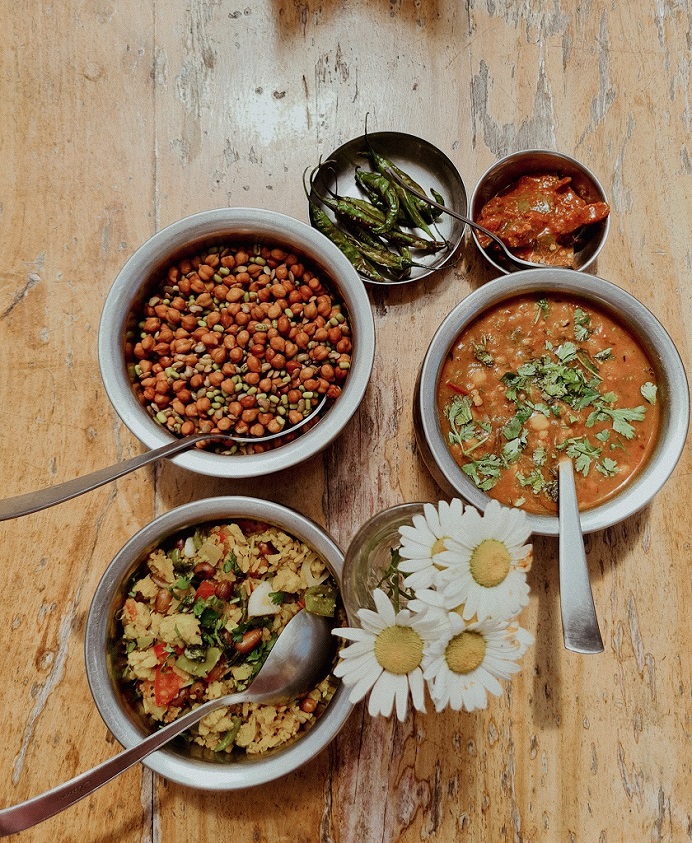

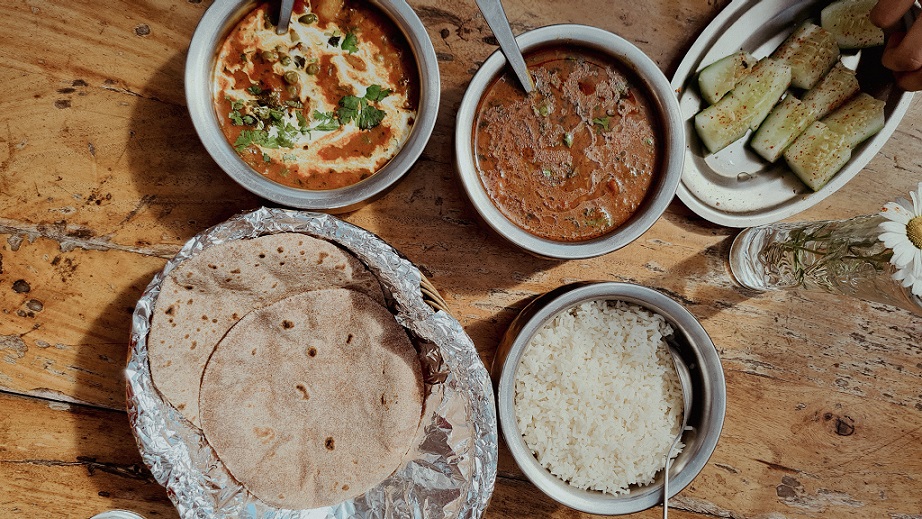
The ‘village’ is powered by the sun. Happy-looking yellow solar lamps are left out during the day to charge, while towards the right, a patch of sleek solar panels glisten a sombre grey, as they soak up the bright rays to power the cottages, the kitchen, the dining hall, and the water pumps.
Suggested read: My go-to travel-friendly sustainable personal care
Supporting Local Communities
The villages of Uttarakhand, particularly the ones closer to the mountains, witnessed an outflux of residents who felt that the urban areas had more opportunities.
However, unknown to them, they were giving up things that city slickers chase – clean air, mountain water, native superfoods, better health, simplicity, and peace of mind. The folks of The Green People decided to bring locals back to their lands through financially rewarding ways. Thus, The Goat Village was born – part of a multi-pronged ‘pro-planet, pro-people and for-profit’ endeavour to encourage sustainable rural tourism and agricultural practices.
These efforts led to a reverse migration, where locals who had left for greener pastures returned; because the greenest pastures were in their backyards all along.

Bishan ji—the manager of The Goat Village in Nag Tibba—Chandu ji and Lucky ji are examples of this reverse migration, as is the in-house chef, who has received professional training in Dubai and is the culinary brain behind the *chef’s kiss* garhwali and kumaoni cuisine that’s served here.
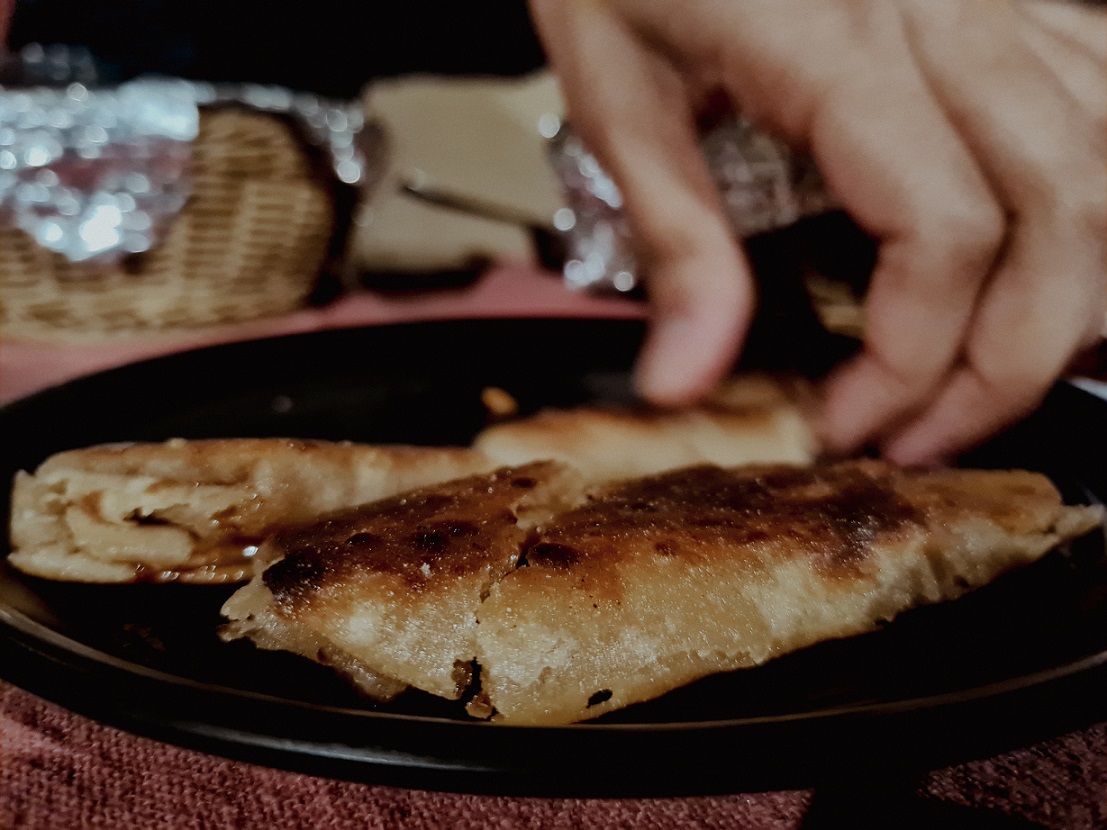
But where are the Goats?
Ah yes, the elusive goats. You’d think The Goat Village would be packed with them, no?
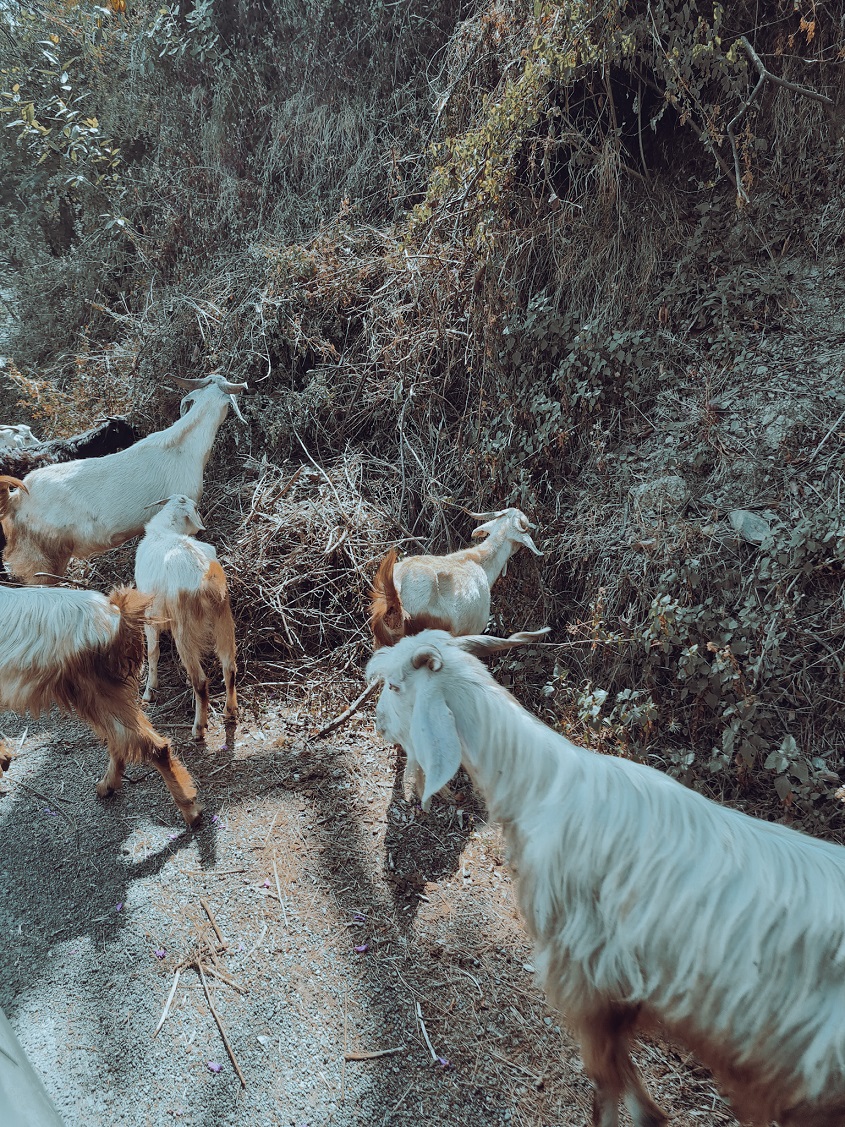
That was the case pre-COVID. Goats were reared by the villagers who stayed in and around The Goat Village. They supplied the villages with fresh milk to be consumed and sold. And they needed sheds and good care. With COVID, travel and tourism shut, meaning there weren’t people visiting The Goat Village. The villagers moved back to Pantwari and other neighbouring towns, along with their goats. I’ve been told that the goats, along with chickens, would be back soon, once the villagers return and the sheds are rebuilt.
How do I get to The Goat Village, Nag Tibba?
You can get here from Delhi or Dehradun. We flew into Dehradun from Bangalore and had arranged for a private taxi that took us via the Dehradun – Mussoorie – Nainbagh – Pantwari – Laser Gaun route.
From Laser Gaun, it’s a 2-kilometre or 1.5-hour trek to The Goat Village in Nag Tibba.
- For more information on how to get to The Goat Village via public transport and self-driven cars, check out The Goat Village website.
- We used Mahakali Taxi Services for the entire trip, including to Lansdowne and back to the Dehradun airport. You can contact Mr Anurag Chhetri at +91 9568681330.
Tip: If possible, avoid going through Mussoorie. The narrow roads and large crowds left us stuck in traffic for over an hour.
What do I pack?
Pack light, because the ascent to The Goat Village can kick butt a little!
If you’re travelling between April and September, carry cotton with light woollens. For October to March, heavy woollens are recommended. A pair of sports shoes with good grip is a need, and if you’re trekking to Nag Tibba, trekking shoes are recommended, although sports shoes will do.
Carry towels and toiletries.
How much does The Goat Village cost?
Since the rates depend on the type of room/cottage and the season, it’s best to contact The Goat Village either via phone at +91 9068025401, +91 9068025301, or +91 9411150250, or via email at [email protected]. The website has rates indicative of the price range for different types of rooms. Reservations can be made here.
We paid approximately INR 16,000/- (excluding tax) for a two-night stay in a three-person cottage. This included all vegetarian meals, refreshments, and tips. Three of us split the amount, so we shelled out INR 5,333/- per person pre-tax – a pretty sweet deal!
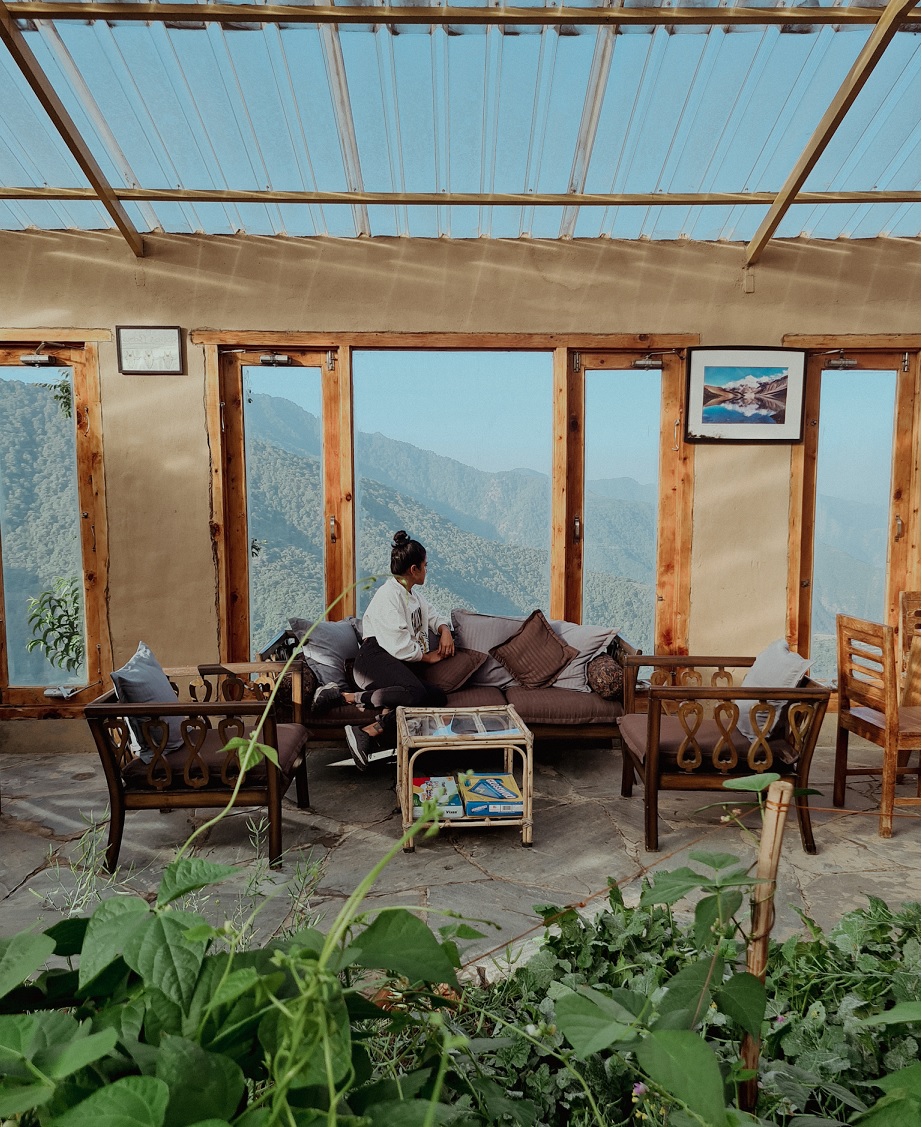
Other expenses included
- Round trip flight for Bangalore-Dehradun – INR 19,513 per person
- Taxi rental for 5 days (spent 2 nights in Lansdowne) including tips – INR 27,000
Is The Goat Village for you?
Are you looking for an escape from the chaos and cacophony of city life? Are you ready to shed the armour of constant communication and mindless scrolling through social media? The Goat Village is neither a luxurious getaway nor an Insta-famous destination that people flock to and gentrify, travel-wise. It’s a pause button on life itself, set in an idyllic rural atmosphere with a backdrop of serene yet striking mountains of the lower Himalayan ranges. If you’re ready to live a few days in simplicity and minimalism, with only fresh air, open skies, story-filled locals, and some adorable goats for company, you know the answer.

